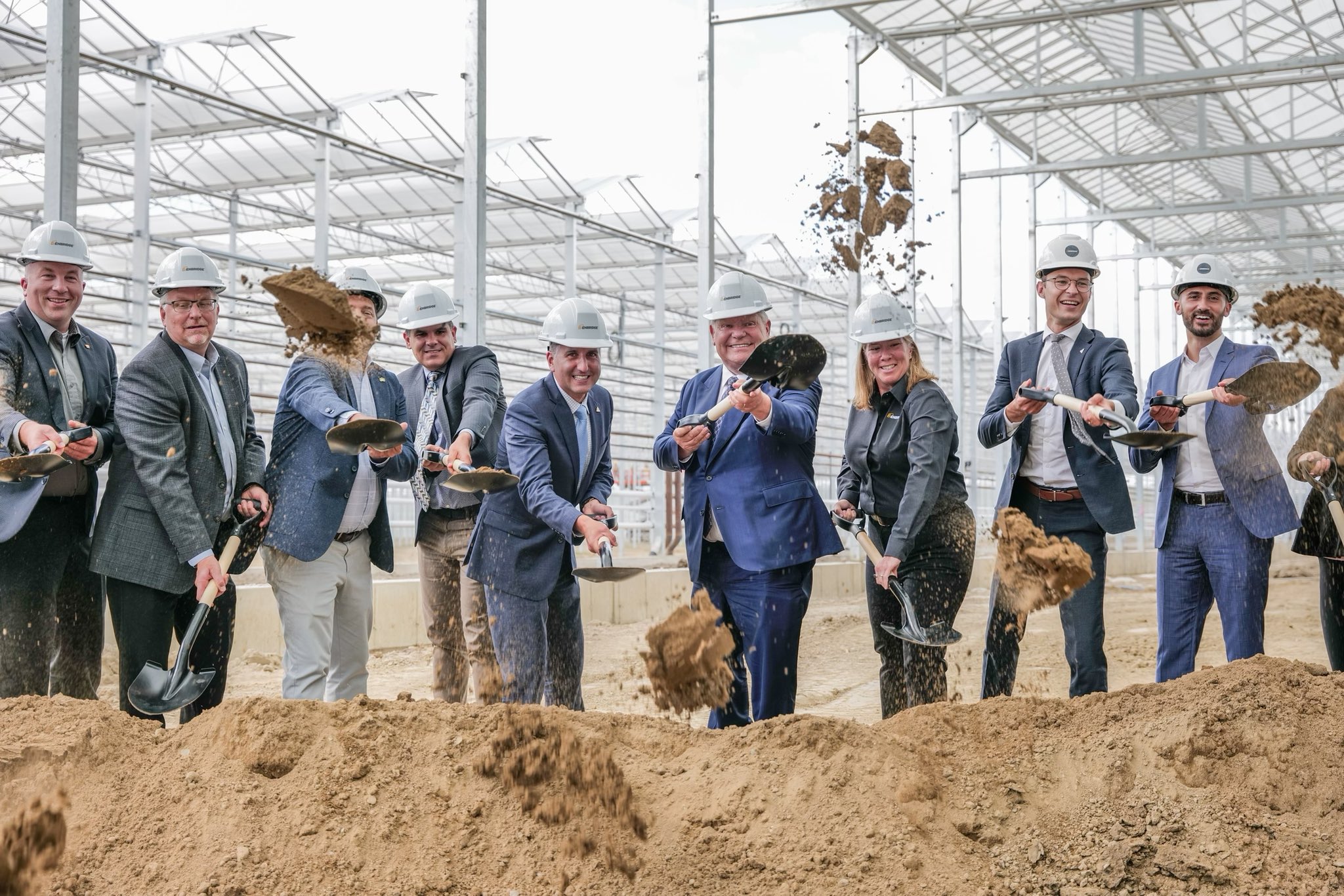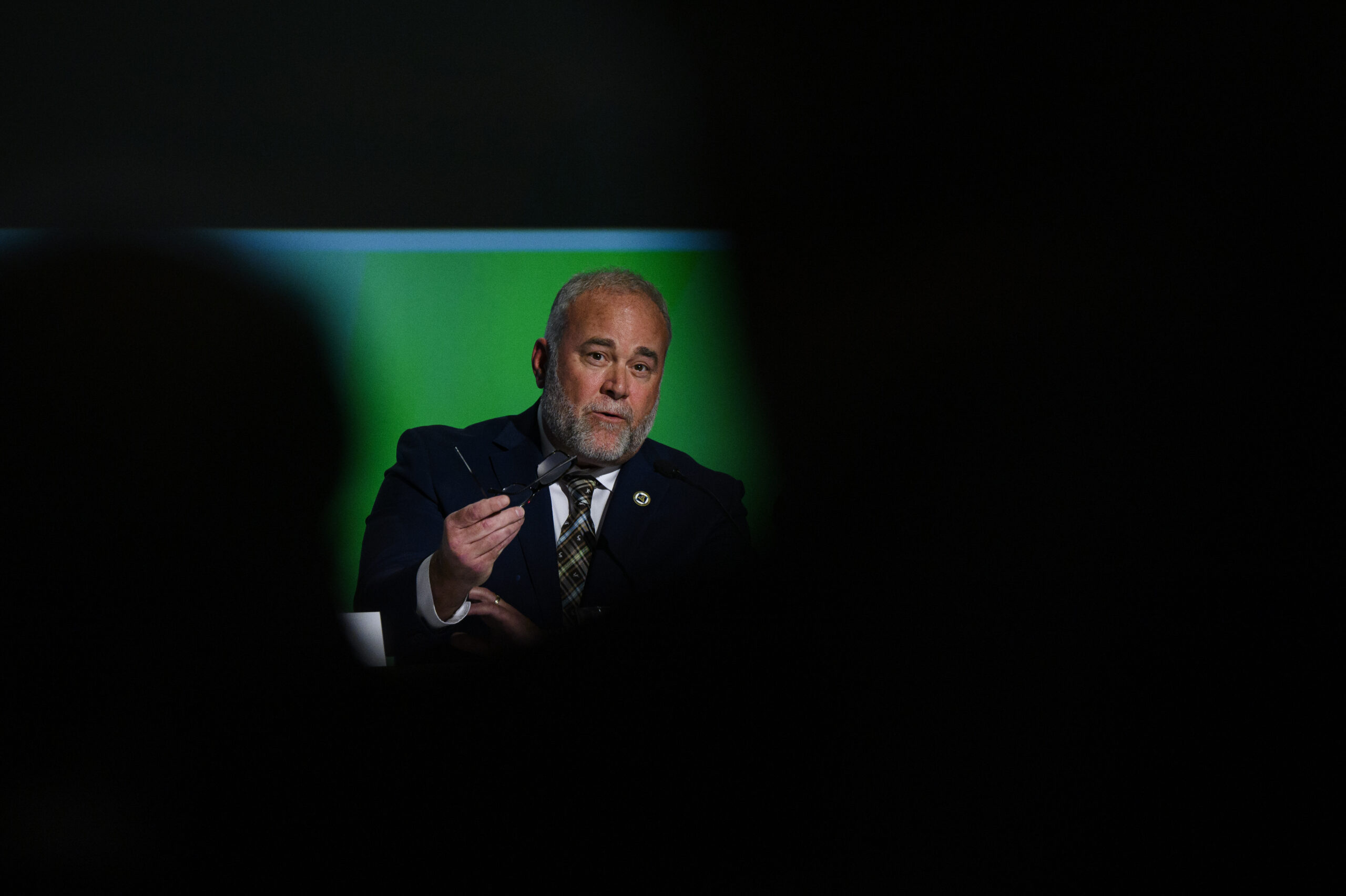
5 things to know about Winnipeg’s big sewage problem
115 billion litres, 70 years to fix, $5.5 billion in lawsuits
Four days before Christmas 2023, a senior Ontario government official was on the phone with top executives from Enbridge Gas getting their take on a landmark announcement that could impact the fossil fuel giant’s bottom line and the future of natural gas in the province.
The call came hours after the Ontario Energy Board, an independent regulator, released a 147-page decision ordering Enbridge Gas to stop passing down the costs of new natural gas connections to homeowners on their monthly bills. Starting in January 2025, the board said Enbridge Gas would have to ask developers to pay these costs in full and upfront, or risk paying them itself. The board had come to this conclusion after considering how climate change is forcing an energy transition that will likely make natural gas — made up largely of heat-trapping methane — less socially acceptable and therefore less financially viable.
Describing this as a “disappointing decision” in emails with the top executives at Enbridge Gas, the ministry official, David Donovan, shared the energy minister’s public response promising to overrule the board 25 minutes after it was posted, and asked the company to keep the government informed on “next steps, communications and otherwise.” Donovan was then-energy minister Todd Smith’s chief of staff from July 2021 until June 2024, and previously served as a senior government affairs strategist for Enbridge between September 2013 and August 2018.
Internal records released through freedom of information legislation to the advocacy group Environmental Defence, and shared with The Narwhal, show both the government and Enbridge Gas had been anxious about the direction of the Ontario Energy Board and this decision in particular for weeks. It was the subject of several calls, text messages and emails, including between Smith and Enbridge Gas president Michele Harradence.
The Narwhal reviewed 577 pages of internal communications between energy officials and Enbridge staff from October to December 2023. They reveal how that dialogue informed the Doug Ford government’s unprecedented decision to overrule the Ontario Energy Board, and how to present it to the public using language about the future of natural gas. Altogether, it illustrates a company concerned about the future of its product and a provincial government which appears to be sympathetic to those concerns and listening closely.
In a statement to The Narwhal, Enbridge Gas spokesperson Kendra Black said the company “works closely with all levels of government and provides regular updates and information on a number of topics,” including board decisions. “As part of our regular engagements with the Government of Ontario, we provide updates on all facets of our operations and projects that impact Ontario residents and businesses,” Black wrote.
No one from the energy minister’s office responded to The Narwhal’s requests for comment.
More than once, the energy board has publicly expressed in its rulings and proceedings concerns about natural gas becoming “a stranded asset” — uneconomical and socially unacceptable as lower-emission energy sources increase and improve. The board has questioned whether new infrastructure like pipelines should be built or old pipelines repaired, and whether companies like Enbridge Gas should have their massive budgets approved by the board without considering all these risks.
“Enbridge is getting nervous that the regulator is now taking seriously what the risk is and where it should lie,” Ian Mondrow, an energy lawyer with the firm Gowling WLG in Toronto, told The Narwhal. “The future of natural gas is a risky business right now, riskier than it used to be.”
Mondrow is clear: there is “nothing untoward” about a big company talking to a ministry or vice versa. But, along with past communications that showed the Ford government weighed heavily how the energy board decision would add “substantial” costs to Enbridge Gas, these new records show the company’s communications with the government are frequent and “more intense than I would have expected,” he said.
“[The records] seem to indicate a growing concern at Enbridge regarding the future of regulatory treatment of natural gas in Ontario,” Mondrow said.
Here are three key takeaways.

The records show Enbridge and government officials were in close communication for at least two months before the board’s decision to relieve homeowners of the cost of new gas infrastructure, and especially in the days and weeks before the decision was released.
Then-energy minister Smith and Enbridge Gas president Harradence held monthly meetings during that period. (Smith was moved to the Ministry of Education in June and resigned on Aug. 16, to reportedly join the private sector.) In one meeting, held two weeks before the board’s decision, they spoke about the potential outcome, per text messages between Smith’s director of policy and an Enbridge Gas strategist. “Curious if government has insights on delay,” the strategist said in a text message to Smith’s director of policy after their bosses’ call — and as the holidays inched closer.
On Dec. 20, the day before the board’s decision, the policy teams at the Ministry of Energy and Enbridge Gas met for their regular virtual meeting, scheduled for every two weeks.
Their seemingly shared concerns came to a head the next day — Dec. 21 — when the Ontario Energy Board released its decision to put the cost of new natural gas hookups on Enbridge, according to the new records. That day, Donovan, Smith’s chief of staff, directly consulted the president, vice-president and other officials at the fossil fuel company to get a “quick response on a number of questions” about the impact of the decision from Enbridge Gas’ perspective.
On Dec. 22 — 30 minutes before the government released its scathing response objecting to the board’s decision — an Enbridge policy advisor sent an email to Donovan thanking him for “the government’s early engagement” on the issue and arguing that the decision “will have detrimental impacts to the affordability challenges facing Ontarians.” In his public response later that same day, then-energy minister Smith said the decision would “slow or halt the construction of new homes, including affordable housing.” (Independent experts have said the board’s decision would actually decrease costs for homeowners.)
“Enbridge has skin in the game here,” Mondrow said. “Why would you take their corporate line and attack the regulator? As a ministry practice, that’s completely inappropriate.”

Donovan sent out the energy minister’s published rebuttal to the decision, asking the president and vice-president of Enbridge Gas for additional information, including the “cost impacts” to various housing customers. “It would be helpful to have a few ‘scenario’ examples from run-of-the-mill to worst case,” he said.
Harradence responded in five minutes, saying they were working on it.
“We’d appreciate it if you keep us informed with Enbridge Gas’s next steps, communications and otherwise,” Donovan continued. “And we hope you can still salvage some downtime this holiday season and look forward to continuing to work together in the new year.”
These records show “how closely Enbridge and the government are intertwined in their strategy,” Jay Shepherd, an energy lawyer, told The Narwhal. “The idea that the government would jump and say something and ask Enbridge to give them the data to support it, well, the government shouldn’t do that.”
In many of the communications, Enbridge flagged for ministry officials the energy board’s failure to provide “regulatory certainty” in the months leading up to the decision.
Shepherd said the phrase is “a buzzword” utilities use when they oppose a change in rules or policies.
Energy regulation is complicated. In Ontario, the government sets energy policy that then guides the Ontario Energy Board’s decisions on which projects and investments to greenlight. Companies such as Enbridge Gas or Ontario Power Generation then make those plans a reality.
Right now, the Ford government has no policy on how to heat new housing developments — whether by installing natural gas connections or using electric options like heat pumps.
“This has created a lot of uncertainty,” Mondrow said, “and also a legitimate political objective for the Ford government. They need to make a policy on the continued role of natural gas in heating new housing.” In January, the government’s expert panel on electrification and energy transition asked for the same thing.
The absence of a policy has left a void that the board is trying to fill — something that Enbridge is seemingly concerned about.
“Enbridge is freaking out and rightly so,” Shepherd said. “The trend in society is to move away from fossil fuels and Enbridge is in the business of fossil fuels.”
In the records, Enbridge Gas officials sent periodic project updates to then-energy minister Smith, his staff and the MPPs of the ridings where projects were located. The updates regularly highlighted challenges in getting the green light from the board for various gas expansion construction efforts in places including Bobcaygeon, Dresden, Sandford, Port of Johnstown, Hastings County and Kitchener. Enbridge officials were adamant that if the government wanted to see natural gas expansion projects proceed, “they must work with the [Ontario Energy Board] to create the regulatory certainty needed.” Such communications were also sent to the premier’s office.
Delays and denials from the board were “unacceptable,” company officials said repeatedly. “Continued setbacks consume resources, project scope, feasibility and waste dollars and ultimately cost customers more dollars that could be better spent.”
One senior ministry official responded to a concerned Enbridge staffer by text message: “I’ve asked the ministry to regroup on this.”
Mondrow explains that energy regulation is about balancing interests, and that requires institutions like the Ontario Energy Board to consider what the private sector wants alongside public needs and benefits. “For the government to step in to serve one interest over the other runs the risk of the wrong outcome,” he said.

In several instances in the records, Enbridge staff informed the government of their communications plan around various projects and concerns.
In briefing notes about natural gas expansion efforts that were paused or delayed by the Ontario Energy Board, the company outlined its “high-level tactics” to inform the broader community. This included media statements and materials to customers and local communities about the need for natural gas infrastructure and the so-called environmental benefits of natural gas (even though it is a major source of pollution, more potent than carbon dioxide). Enbridge also included paid online posts targeted to readers in the impacted project areas that would advise customers on how they can advocate to the government for more connections to natural gas.
In at least two instances, government officials directly suggested communication tactics to Enbridge Gas. Donovan told one company official to make sure Enbridge contacted all MPPs about a provincial bill that would prohibit underground infrastructure owners and operators, like Enbridge Gas, from charging fees to help other companies locate buried utilities when doing their own construction.
“Continued support for this legislation is critical to success, it would be great to see Enbridge at committee as well, and a supportive letter to legislators would also be helpful,” Donovan wrote.
Enbridge staff also routinely emailed the energy minister’s office with social media posts and other online items, including an Enbridge-sponsored post in The Globe and Mail about carbon capture and storage opportunities in Ontario.
“Making sure you’ve seen this positive piece,” the Enbridge official wrote to members of the energy minister’s office.
“Excellent piece by Enbridge,” one government official responded.
Get the inside scoop on The Narwhal’s environment and climate reporting by signing up for our free newsletter. On a warm September evening nearly 15...
Continue reading
115 billion litres, 70 years to fix, $5.5 billion in lawsuits

Climate change, geopolitics and business opportunities power a blue economy

10 billion litres of sewage are dumped into Winnipeg’s lakes and rivers each year. Some...
